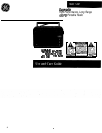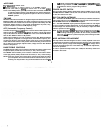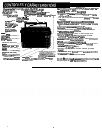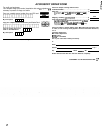
POWER SUPPLY
This
TVm-Way
portable radio operates on AC Household power or 6 “D” size
batteries
with-automatic
AC/DC
“witching, The batteries (noi included with radio),
and power cord are housed in a compartment on the back of the radio.
BATTERY OPERATION
1.
2.
3.
4.
Gently place the radio on its front with the bottom facing you.
Remove the battery/cord storage compartment door by releasing the three
compartment door latches, then swing door toward you and off.
Insert the 6 “D” size batteries into the compartment as indicated on the panel
inside the compartment. Be sure the + (cap) end of each battery is installed
in t he direction shown in the battery outline. Insert’ ‘bottom row” of batteries
first, then slide the “top row” under the BATTERY STRAP from the left side
of
6 “D” SIZE
BAITERIES
Replace the compartment door
by
first
placing
the bottom securing tabs into
their receptacles; then swing
doo}
into
positi&
and press until
th;three
lat-
ches “snap” into place.
NOTE. After a portable radio has been used extensively in battery operation,
the qualify of the sound may deteriorate or the loudness may decrease.
When this happens, the very first thing to suspect is rundown batteries.
Further confirmation that the batteries are run down can be made by
changing to AC tine cord operation. If the sound quality improves the
batteries are run down and should be replaced with new batteries.
Your SUPERRADIO offers exceptional battery life with standard “D” size bat-
teries. Alkaline batteries, although more expensive, offer increased battery life
over standard cells.
IMPORTANT
Since few batteries are actually “leakproof”, always remove batteries, (even if
new) when storing product unused for over 30 days or using AC continually. For
shorter periods of AC operation (up to 30 days) batteries may remain in product.
Always remove worn-out batteries as they may leak chemicals which
will
damage
the electronic components and cabinet. When discarding
baUeries,
be sure to
dispose of them in the proper manner, according to your state and
local
regulations.
120-VOLT AC OPERATION
Remove
&wer
cord from COrTptirWIt and plug into any 120-volt AC household
outlet. An opening in the compartment door
has been
provided to permit AC
operation with the door in place. Your radio will automatically convert from bat-
tery to AC operation. When finished using radio on
AC,
be sure to Switch POWER
ON-OFF switch to OFF. Removing plug from household outlet without
switching
radio to OFF will automatically revert operation to battery power.
FM-AM OPERATION
1.
2
3.
4,
5.
6.
7.
8.
Turn radio ON by depressing the POWER ON-OFF switch.
Select AM or FM operation with the BAND SELECT switch.
For FM reception, lift and extend the Whip Antenna to its fullest length. See
page 4 for further information on both the AM and FM antennas.
Turn the volume up by rotating the VOLUME Control in a clockwise
diretilon.
Rotate the FM/AM TUNING knob to select your favorite FM or AM station.
Precise tuning to distant (or weak) FM stations can be achieved by following
the AFC (Automatic Frequency Control) directions as out-lined on page 4.
Adjust the VOLUME, BASS and TREBLE controls to your preferred listening
level and tone.
To turn radio off, press the POWER ON-OFF switch again.
AM BAND
AM Band radio stations are assigned broadcast frequencies between 540 and
1700 Kilohertz (KHz). AM transmissions leave the antenna in two types of radio
waves - ground waves and sky waves. Ground waves stay close to the ground
and can be picked up by receivers in the local area. Sky waves go into the sky
and pass thru the ionosphere into
outer
space. Some sky waves have a tenden-
cy to “bounce” back from the ionosphere (especially during the evening hours)
and can be picked up by distant receivers.
3
.


















